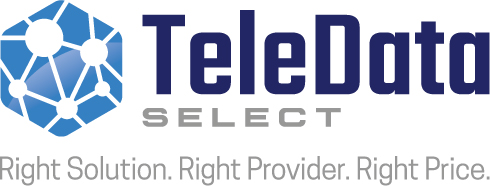
High Speed Internet Access
At TeleData, our mission revolves around facilitating seamless connections between businesses and their customers, suppliers, and the wider digital landscape. Through our Business Internet service, we prioritize providing robust, high-speed connectivity tailored to meet the unique demands of each enterprise.Our repair process is characterized by its agility and precision, swiftly addressing any issues that may arise to minimize downtime and ensure uninterrupted access to essential online resources.
Our team of skilled technicians stands ready to resolve connectivity challenges and optimize network performance, ensuring that businesses can operate smoothly and efficiently in today’s interconnected world
Fiber Internet
Fiber internet works using fiber-optic lines to transmit data. If uploading data is an important part of your business model this may be an option for you.
Cable Internet-Coax Cable
One of the most popular and widely available source of broadband internet is via coaxial cable. The extra bandwidth that is not used for cable Television traffic is used to achieve extremely fast access to the Web.
Fixed Wireless
Fixed Wireless Internet is a fast-growing broadband internet service that uses stationary wireless access points to “beam” connectivity directly to customers within its coverage area.


Wireless Internet-5G
The next generation wireless technologies are being built out in many major markets. 5G offers supper fast wireless delivered by the traditional cell phone Wireless providers. It is expected to vastly and quickly change the face of networking.
Satellite Internet
Internet delivered via satellite is becoming more reliable with faster speeds than ever before. This is a particularly good option for business in rural areas where traditional internet options may be less available.
Key features of TeleData’s Business Internet solutions:
- High-speed and reliable internet connectivity tailored for businesses
- Dedicated customer support for rapid assistance and troubleshooting
- Scalable solutions to accommodate the evolving needs of growing enterprises
- Guaranteed uptime to ensure uninterrupted access to critical online services
- Robust security measures to protect sensitive data and digital assets
- Flexible plans customizable to suit the unique requirements of each business
In summary, TeleData offers businesses a comprehensive Business Internet solution featuring high-speed connectivity, dedicated customer support, scalability, uptime guarantees, robust security, and flexible plans, all underpinned by a responsive repair process aimed at minimizing disruptions and fostering seamless operations in today’s digital ecosystem.

Let us Help Make it Easy
We’ve helped hundreds of companies over the last 20 years audit and streamline the process of buying and managing Telecom services.TESTIMONIALS
What People Are Saying
John Hagan, the owner of TeleData Select did a great job supervising our low voltage cable install; the job was done quickly efficiently and for a fair price. I am more than happy to recommend to my clients who need telecom services, TeleData Select.
Our staffing firm Express Professionals located in Atlanta, GA provides temp, temp to hire and permanent placement for employees throughout the Atlanta Area. We are dependent on the phone and need quality service for voice and data services. So after spending months dealing with ATT trying to fix the quality of our voice lines, I reached out to TeleData Select to help fix a major issue we had with our voice lines. After we tried for months to get someone to help us with lots of finger-pointing, we turned to John Hagan and his team and TeleData Select. The time spent and the thorough analysis of our problem by TeleData Select was really a game changer for us. I would recommend Teledata Select to anyone needing a consultative analysis due to phone issues or to any company just looking to save money with their telecom and data services expenses.
We are delighted with our new phone system. Working with (Teledata Select) our new phone system has been configured with exactly the functionality we were hoping for. John and his team at TeleData Select have been fantastic to work with. I especially love the fact that it is now seamless between our two locations in Norcross, GA and Marietta, GA which was a key goal. John thanks for all your help!
We worked with TeleData Select to help choose a phone system. The phone system has worked out beautifully for our firm, it is scalable as we grow. We plan on growing to 15-20 attorneys in the near future. We are very happy with the phone system and very happy with TeleData Select.
Related Posts
Simplify, Save, and Streamline: Why a Fully-Managed Approach to Telecom and IT Expense Management Matters
Managing telecom, mobility, and IT expenses across multiple locations is a constant challenge. With confusing contracts, bloated bills, and too many vendors to count, many businesses are left overpaying and under-informed.
How Businesses Can Best Use AI: Strategic Considerations & Practical Applications
Artificial Intelligence (AI) isn’t just for tech giants anymore. From enhancing customer service to boosting online conversions, AI is helping businesses of all sizes work smarter—not harder. This article breaks down the most effective ways to apply AI across key business functions, with practical tips and strategic insights to ensure successful implementation. Whether you’re just getting started or looking to scale, discover how to turn AI into a competitive advantage.
Future-Proofing Your Telecom Infrastructure for Growth
Is your telecom infrastructure ready for the future? From cloud-based systems to 5G and cybersecurity, this guide walks you through the key steps to ensure your business stays connected, competitive, and growth-ready.

Let us do the work
We’ve helped hundreds of companies over the last 20 years audit and streamline the process of buying and managing telecom services without the overwhelm and hassle of working directly with Telecom providers.
Focus on Running your Business
We belive life’s too short to waste time on the phone dealing with telecom providers, when you can have an expert do it for you.



